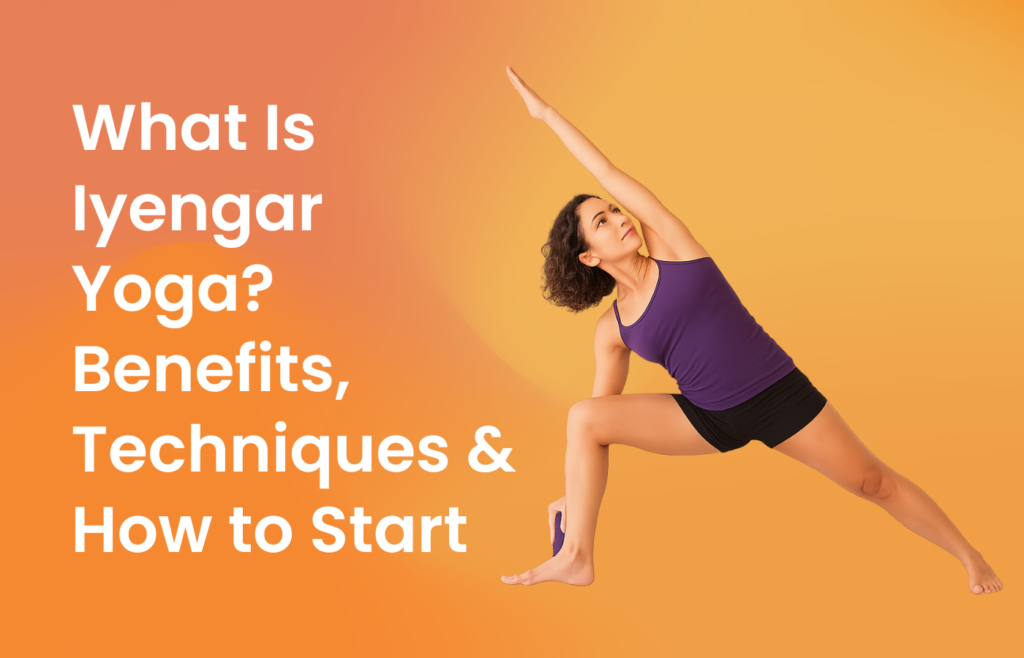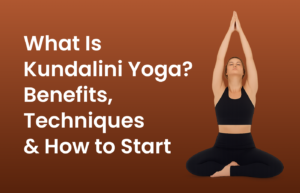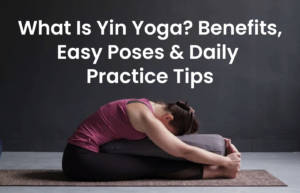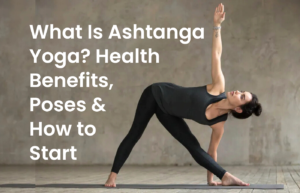
In the world of yoga, where various styles promise flexibility, peace, and better health, Iyengar Yoga stands out as a powerful, precise, and deeply therapeutic practice. Created by the legendary yoga master B.K.S. Iyengar, this method is known for its focus on alignment, use of props, and attention to detail. Whether you’re new to yoga or looking to deepen your practice, Iyengar Yoga offers a structured and supportive path toward holistic well-being.
In this blog, we’ll explore what makes Iyengar Yoga unique, its key benefits, techniques, and how you can start your own journey step by step.
What Exactly Is Iyengar Yoga?
Developed by B.K.S. Iyengar, one of the most influential yoga teachers of the 20th century, Iyengar Yoga is a form of Hatha Yoga that emphasizes precise body alignment, structured sequences, and the intelligent use of props. It transforms each yoga pose into a tool for inner and outer balance.
Rather than rushing from one posture to the next, this style encourages you to slow down, observe, and refine. You hold poses longer, breathe more consciously, and begin to experience yoga not just as exercise but as a healing science.
Why Is It So Unique?
Here’s what makes Iyengar Yoga stand out:
Precision and Alignment
Iyengar Yoga teaches that how you do a pose matters as much as which pose you do. Each movement is intentional, each alignment purposeful. This sharpens awareness and reduces risk of injury.
Use of Props
Chairs, blocks, straps, bolsters – even walls are all welcome here. Props help make the poses accessible to everyone, regardless of age, injury, or flexibility.
Longer Holds
Holding poses for extended periods strengthens muscles, increases flexibility, and builds mental focus. It also allows you to truly “be” in the pose, not just pass through it.
Therapeutic Approach
Because of its careful alignment and prop usage, Iyengar Yoga is often prescribed for people with physical limitations, pain, or postural issues.
Sequencing
Classes are thoughtfully sequenced, often starting with standing poses and progressing to forward bends, backbends, inversions, and restoratives building both strength and mindfulness.
Top Benefits of Practicing Iyengar Yoga
The benefits of Iyengar Yoga are both deep and long-lasting, impacting your body, mind, and even your emotional well-being.
1. Better Posture & Body Alignment
This style trains you to move and sit with awareness, helping correct poor posture and chronic muscular imbalances.
2. Enhanced Flexibility – Safely
Thanks to props and slow progressions, even those with tight muscles or stiff joints can experience safe, lasting flexibility.
3. Builds Strength & Stamina
Longer holds activate deep muscle groups and improve physical endurance. It’s like doing a full-body workout but with breath and grace.
4. Heals Chronic Pain
Many practitioners report relief from back pain, joint stiffness, arthritis, and postural issues through regular practice.
5. Mental Focus & Emotional Balance
By focusing on every breath and detail of a pose, your mind becomes still, calm, and centered.
6. Accessible to All
Young or old, beginner or experienced, flexible or stiff – Iyengar Yoga meets you where you are.
Common Poses You’ll Practice
Here are a few foundational Iyengar poses you’ll likely encounter:
- Tadasana (Mountain Pose) – A masterclass in stillness and standing tall.
- Adho Mukha Svanasana (Downward Dog) – Strengthens and stretches the whole body.
- Trikonasana (Triangle Pose) – Opens the hips, chest, and spine with precision.
- Setu Bandha Sarvangasana (Supported Bridge Pose) – Gently energizes and heals with prop support.
- Viparita Karani (Legs-Up-the-Wall) – A deeply restorative inversion great for stress and fatigue.
Each pose can be adapted with props to match your flexibility, strength, and physical condition.
Iyengar Yoga vs Other Styles
| Feature | Iyengar Yoga | Vinyasa Yoga | Hatha Yoga |
|---|---|---|---|
| Pace | Slow, detailed | Fast, flowing | Moderate |
| Props | Always used | Rarely | Sometimes |
| Focus | Alignment, precision | Movement & breath | Basic postures |
| Suitable for Injuries | Yes | Limited | Moderate |
| Mental Focus | High | Medium | Medium |
How to Start Your Iyengar Yoga Journey
Getting started is easier than you think! Here’s how to begin:
1. Join a Certified Iyengar Class
Look for certified Iyengar instructors or yoga schools that specialize in alignment-based teaching. Some of the top yoga centres in Rishikesh offer regular Iyengar workshops and teacher training programs for all levels.
2. Learn the Use of Props
In your first class, you’ll be introduced to blocks, belts, bolsters, blankets, and chairs. These aren’t crutches – they’re tools to help you do yoga more safely and correctly.
3. Start Slow and Be Consistent
Iyengar Yoga is a journey of refinement. Even advanced students return to basic poses to deepen their understanding. Practice 3–4 times a week for noticeable progress.
4. Use Resources
Books like “Light on Yoga” or “The Tree of Yoga” by B.K.S. Iyengar can deepen your understanding and help you build a home practice.
5. Respect Your Limits
Iyengar Yoga isn’t about touching your toes – it’s about listening to your body. If you stay consistent, your flexibility and strength will naturally grow.
Tips for Beginners
- Start with beginner-level Iyengar classes or workshops.
- Practice on a non-slip yoga mat with a few basic props.
- Avoid comparing yourself – each body is different.
- Keep a small journal to track your progress and feelings.
- Practice patience. This is not a quick-fix but a lifelong practice.
Final Thoughts
Iyengar Yoga is more than just physical movement – it’s a path to personal growth, inner calm, and deep healing. Its thoughtful approach, use of props, and focus on detail make it one of the most accessible and therapeutic forms of yoga available today.
Whether you’re just starting your yoga journey or looking to heal and refine, Iyengar Yoga offers a safe, supportive, and transformative practice. And if you ever find yourself in India’s yoga capital, exploring top yoga centres in Rishikesh can give you the authentic experience guided by experienced Iyengar instructors in the spiritual lap of the Himalayas.
Ready to explore a yoga practice that aligns your body, mind, and soul?
Iyengar Yoga might be exactly what you’ve been looking for.






